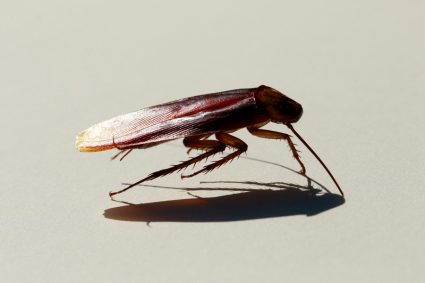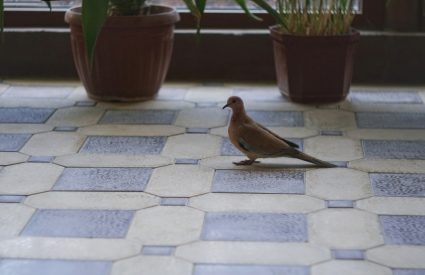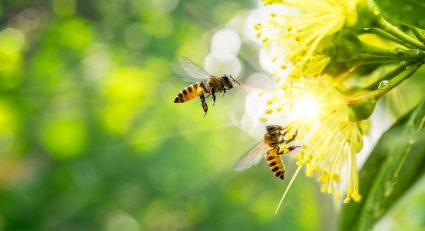
Carpenter bees may be beneficial for pollination, but when they take up residence in your home or property, they can cause significant structural damage. This is where effective deterrent methods come into play, one of which is using the right kind of paint. In this comprehensive guide, we will delve into the types of paint that deter carpenter bees and how they work.
Carpenter bees are deterred by painted surfaces, especially those painted with polyurethane or oil-based paints. Applying a primer and two coats of exterior paint can help dissuade these bees from nesting. Using a glossy finish can enhance the repelling properties of the paint. Additionally, adding natural repellents like almond oil, citrus oil, or an organic additive like NBS-30 to your paint can further keep carpenter bees at bay.
The Role of Paint in Detering Carpenter Bees
Carpenter bees are typically drawn to bare, weathered, and unpainted wood. Therefore, painting all wood surfaces can help deter carpenter bees from nesting on your property. The characteristics of paint that can deter carpenter bees include:
- Complete coverage: Ensure all wood surfaces are painted, as carpenter bees prefer untreated wood.
- Sealing primer: Use a sealing primer before applying paint for additional protection.
- Multiple coats: Apply at least two coats of exterior paint to increase its effectiveness.
- Glossy finish: A glossy paint finish has better repelling properties compared to matte finishes.
- VOCs: Paints and stains contain volatile organic compounds (VOCs) that can deter carpenter bees due to their sensitivity to smells.
- Insecticide treatment: Treat the wood with insecticide before painting to deter or kill carpenter bees and their larvae.
- Paint additives: Use a bee repellent paint additive to keep carpenter bees away.
Types of Paint That Deter Carpenter Bees
There isn’t a specific color that is more effective in deterring carpenter bees, but painting or staining wood surfaces can help deter them, as they prefer untreated, bare wood. Polyurethane paints are considered a good defense against carpenter bees.
In addition to painting or staining, you can use natural repellents like almond oil, citrus oil, and peppermint oil, which carpenter bees dislike. Another option is to use NBS-30, an organic paint and stain additive that repels carpenter bees and other nuisance pests. Mixing NBS-30 with your paint or stain can help keep carpenter bees away for up to 24 months.
Scientific Evidence
Scientific evidence suggests that certain paints can deter carpenter bees from nesting in wood surfaces. Polyurethane or oil-based paints are recommended for deterring carpenter bees. Painting all exposed wood surfaces with a primer and two coats of exterior paint can help dissuade carpenter bees from starting nests. Stains and varnishes can also offer some protection.
Recommended Brands or Products
Some recommended products that can be added to paint or stain to deter bees include:
- Outlast NBS 30 Insect Repellent: This time-released insect repellent additive can be mixed with most exterior stains and paints.
- Natural Defense with Citronella Bug Repellent: This stain and paint additive contains citronella oil and repels carpenter bees.
- Bee Gone Insecticide Concentrate: This EPA-registered pyrethroid insecticide can be applied in Wood Guard exterior stain or water to wooden structural surfaces on residential buildings.
Natural Ways to Deter Bees from Painted Surfaces
- Peppermint oil: Create a mixture of water, liquid soap, and a few drops of peppermint oil in a spray bottle and apply it to the painted surfaces.
- Almond and citrus oil: Apply these oils to the painted surfaces to deter bees.
- Citronella: Use citronella candles or oil to create a barrier around the painted surfaces.
- Cinnamon: Spread ground cinnamon or cinnamon powder around the painted surfaces.
- Cucumber peels: Place cucumber peels near the painted surfaces to keep bees away.
- Smoke: Use a smoky candle or build a campfire near the painted surfaces.
Remember, no solution is 100% effective. It’s often necessary to combine different deterrent methods to protect your property from carpenter bees effectively.
Frequently Asked Questions
How often should I repaint or reapply the treatment to deter carpenter bees?
The frequency of reapplication can vary depending on the product used and the severity of the carpenter bee problem. However, generally, it is recommended to reapply every 1-2 years.
Can I use these deterrent methods for other types of bees or insects?
While the deterrent methods mentioned in this blog post are specifically for carpenter bees, some of them might also work against other types of bees or insects. However, it’s best to research or consult with a professional for specific pests.
Are there any potential health risks associated with using paints or treatments that contain VOCs?
VOCs in paints and treatments can cause health issues such as eye, nose, and throat irritation, headaches, loss of coordination, and nausea. Long-term exposure can also lead to damage to the liver, kidneys, and central nervous system. Always use such products in a well-ventilated area and follow the manufacturer’s safety instructions.
Can I apply these paints or treatments myself, or do I need to hire a professional?
If you’re comfortable with DIY projects, you can certainly apply these paints or treatments yourself. However, if dealing with a severe carpenter bee infestation, it might be best to hire a professional to ensure effective treatment and to avoid potential damage to your property.
Will painting my wood surfaces guarantee that carpenter bees will not infest my property?
While painting wood surfaces can significantly deter carpenter bees, it’s not a 100% guarantee. Carpenter bees can still infest painted wood, though they prefer untreated wood. Combining painting with other deterrent methods can enhance the effectiveness of preventing carpenter bee infestations.












